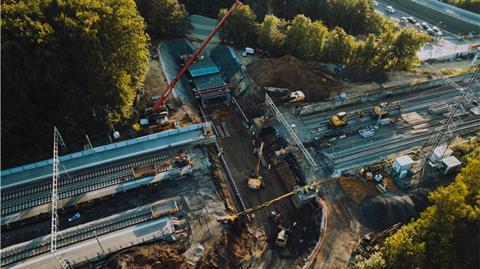On behalf of Stadsbader Contractors, Mammoet lifted and skidded an 850-tonne concrete tunnel section a distance of 40 m, passing underneath railway lines, in Belgium. Combining existing skidding equipment with battery-powered technology, the engineered transport specialist devised a solution that would lower the carbon impact of the civil project.

The project required precise calculations and implementation to lift and skid the tunnel section, measuring 25 m x 8.5 m, across 40 m to reach its destination below a railway track near Brussels. The operation also had to be carried out under strict time constraints, with minimum disruption to train users and before the Monday morning commute began.
Using Mammoet’s specialised tunnel adaptors and skidding system, hydraulic jacks were put into place to manoeuvre and lift the concrete tunnel section from the ground. When enough ground clearance was created, hydraulic cylinders pushed the tunnel section across 40 m of skid tracks to its destination.
The hydraulic power used to achieve this was generated using an electric powerpack, combined with a battery, to supply the power needed. To determine what was needed to carry out the job, Mammoet engineers executed several smaller scale projects, such as transformer installations, which served as feasibility tests before moving on to the large-scale Belgian project.
The electric powerpack, or mobile power unit, is powered by recycled batteries, with a maximum capacity of 50kWh. It accepts standard inputs and outputs at 16, 32 or 63A and can also be charged using solar energy.
The sustainable mobile power source enabled Mammoet to not only perform the special device skidding operation with zero emission, but also off the grid. This means the solution is transferable to even relatively remote locations.
















